Q&A – Ask Neil: June 27, 2024
(Please read these instructions carefully.)
Before you post your question, please look at recent issues to see if someone else has already asked it. You might find your answer there.
How to submit your question…
(Note: You may need to allow a pop-up window to come up in order to get the link for sending your photo(s). If you have already submitted your question and didn’t see the pop-up window, please click here.)
• Click the link provided below to post your question. After you submit your question, a new window will pop up giving you the address to which you can e-mail a SHARP, HIGH-RESOLUTION PHOTO to accompany your question. Please DO NOT SEND THUMBNAIL PHOTOS in case I need to zoom in to see things.
• Click here to post your question.
• Please ONLY POST YOUR QUESTION ONE TIME. We can only accept a set number of questions each week, and when we get duplicates it costs other people their chances.
• One question per reader, please.
• Please use this only for posting questions – not for standard emails.
• Watch for your answer in the following week’s e-gardens.
• I choose those of greatest general interest. For example, plant IDs seldom make the cut.
• I must have your first name or initials.
• I must have your city or county. (Texas is a very large state.)
QUESTION 1
WHAT IS THIS ODD GROWTH ON MY TEXAS MOUNTAIN LAUREL?
Question: I planted this Texas mountain laurel several years ago in a hot, sunny median garden. It produced this odd bloom and seed pods. What caused this? Rachel K., Dallas.
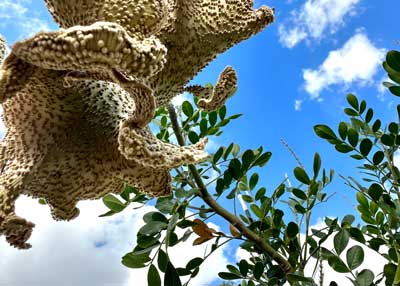
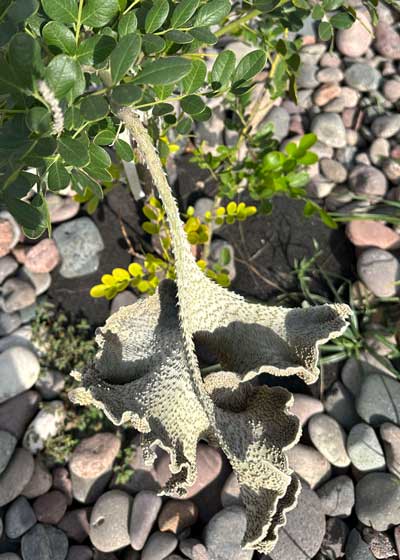
Answer: This is “fasciation.” That’s when cells divide prolifically in only two planes. It’s not common, but certainly not unheard of with Texas mountain laurels. You may already know a plant that is quite familiar for this unusual growth form: cockscomb celosia. I’ve included a photo of it as well as a wildflower bluebonnet to show you that it does happen elsewhere in nature. There also are types of cacti and succulents that are propagated to encourage this growth. In the case of mountain laurels, you just want to trim it out by cutting back into normal growth. It’s a mutation that you don’t want to encourage.
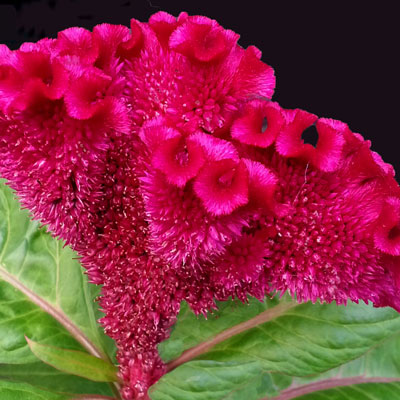
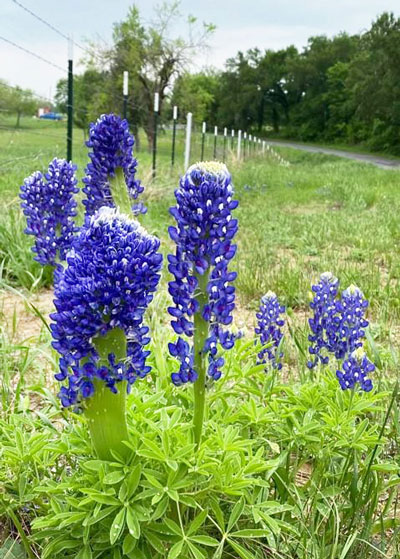
QUESTION 2
WHAT IS THIS ON THE TRUNKS OF TWO OF MY LACEBARK ELMS?
Question: I came home last week to find this on the trunks of two of my lacebark elms. What is it? Meg R., Trophy Club.
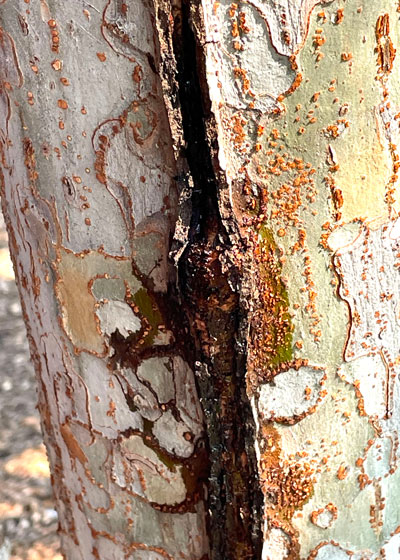
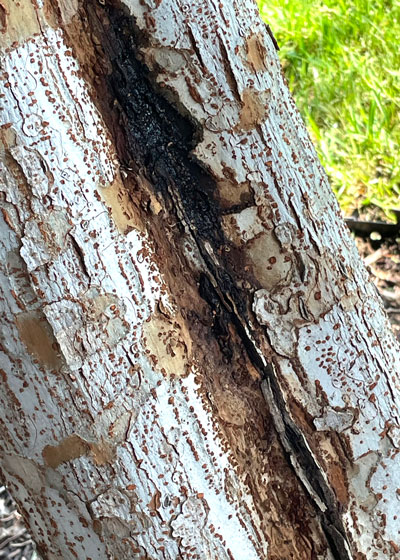
Answer: I assume you’re asking about the dark discoloration. It appears to be coming out of cracks in the trunks. Damage like that could have been due to extreme cold in recent winters, even three years ago in February 2021. I’m noticing a lot of damaged lacebark elms in McKinney and North Dallas where my wife and I drive a good bit. When you have a tree with such an injury, it’s not uncommon for decay to set in within the depths of the injury. That can weaken the tree severely. That’s when it’s time to call in a certified arborist to do whatever can be done to stabilize the tree.
QUESTION 3
HOW CAN I ELIMINATE THIS WEED IN MY BERMUDAGRASS?
Question: What is this low-growing weed in my bermudagrass? Most importantly, how can I get rid of it? Judy W., Pottsboro.
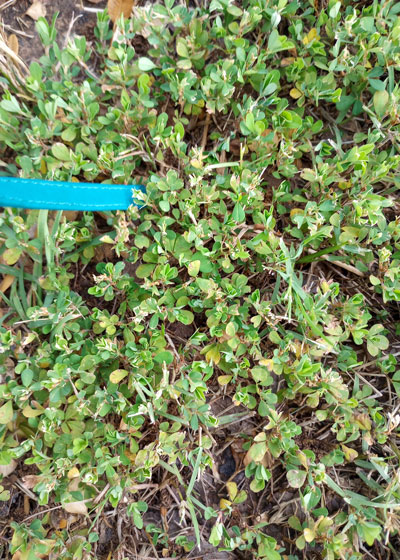
Answer: It looks like purslane. If the leaves and stems are fairly succulent, that would be it. The exact ID isn’t critical, however. It obviously is not a grass, so a broadleafed weedkiller would control it. Get one of the products that includes 2,4-D and apply it with a tank sprayer (as opposed to a hose-end type). As hot and dry as it’s getting you may have to spray a couple of times 10 days apart.
QUESTION 4
WHAT IS CAUSING THIS MONTEREY OAK TO DARKEN ON THIS SIDE? THE OTHER SIDE BUBBLES WHEN IT RAINS.
Question: My neighbor has a 25-year-old Monterey oak. It has this darkening on one side. The other side bubbles when it rains. What is the possible problem, and is there a solution? Cindy P., San Antonio.
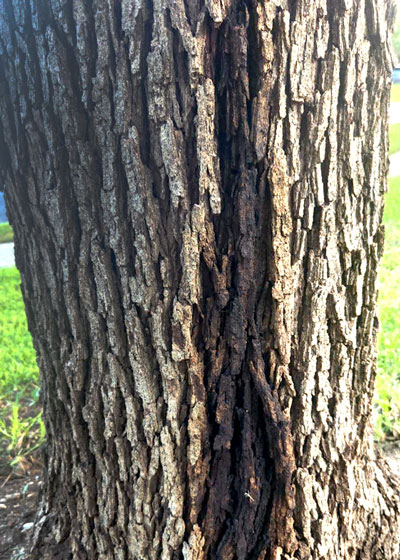
Answer: At the risk of sounding like a broken record, this is similar to the answer I gave to the lacebark elm question above. Your neighbor’s tree was almost assuredly hurt in the cold of February 2021. Monterey oaks all across South and South Central Texas were ravaged by that cold spell. There is decay going on within the trunk of this tree currently, and that accounts for the black ooze in the photo. The bubbles are from gasses that form under the pressure of decay processes that occur within the wood as it breaks down. Again, your neighbor needs to call on the help of a certified arborist as quickly as possible.
QUESTION 5
WHAT IS WRONG WITH MY TEXAS SAGES?
Question: What is going on with my Texas sages? Some look like this. Others look normal. Toni L., Plano.
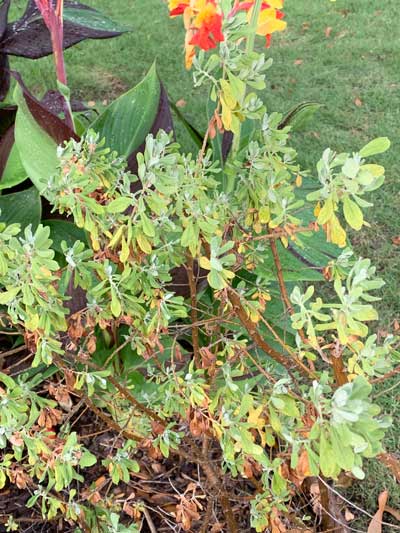
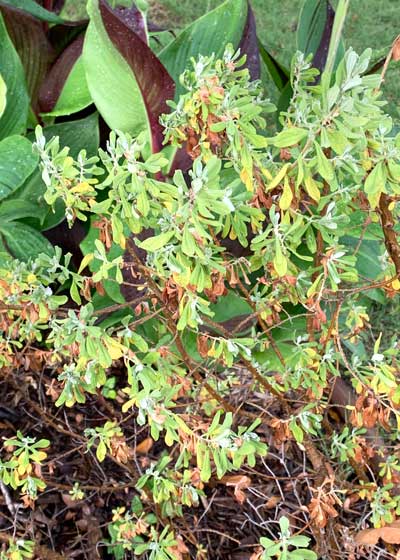
Answer: The past three winters have taken a real toll on Texas sages in North Central Texas. February 2021 killed most of them to the ground. Then two winters since then have weakened new plants and those that survived. There is a long planting along US75 that my wife and I pass several times a week. Some look fine. Many look like your plants. Others are almost dead. It’s all due to cold damage. This plant is native to Southwest Texas where temperatures seldom go below 20F. Your city has been below 0F one time and near or below 10F twice in the past three winters. That, coupled with your very heavy Blackland Prairie soils and almost non-stop heavy rains this spring added up to a lot of Texas sage failures this spring.
QUESTION 6
ARE THE REDDISH LEAVES OF MY DWARF YAUPONS A CONCERN?
Question: My dwarf yaupon holly leaves have reddish leaves. Is this an issue? If so, what should I do? Paula L., Carrollton.
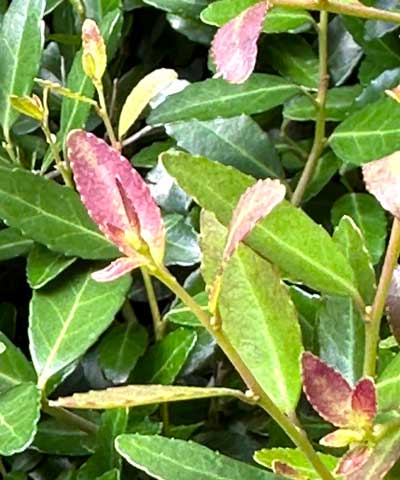
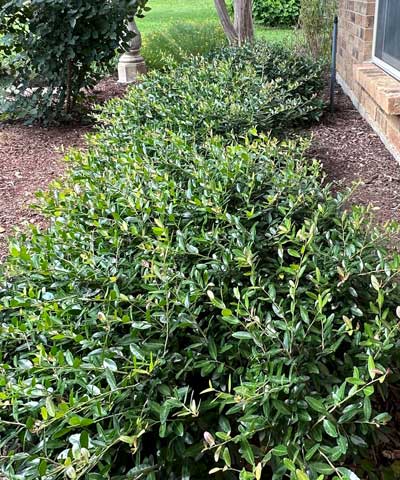
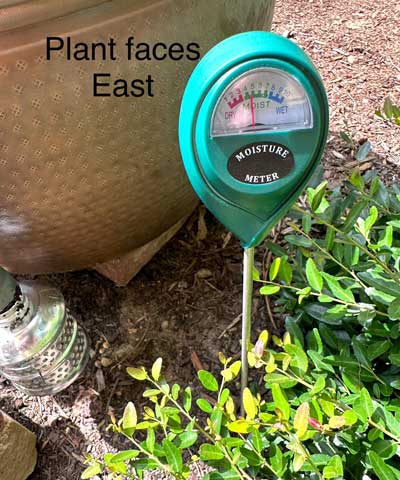
Answer: That purplish color is common with several hollies in the spring. It’s no cause for concern. I would be fertilizing dwarf yaupons every two months with a high-nitrogen lawn fertilizer followed by a deep watering. Otherwise, I see no need for anything else. Your planting looks terrific. Congratulations, by the way, on using the water bubbler for your hand irrigation. They’re incredibly handy for putting out large amounts of water in a hurry without washing the soil away.
